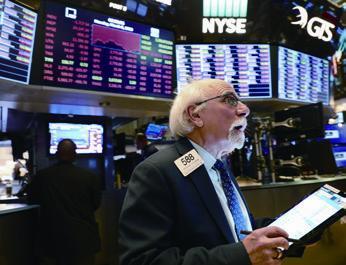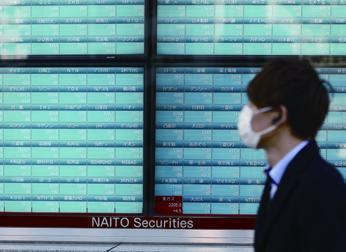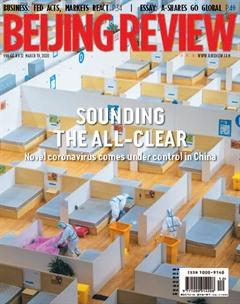A Surgical Cut
By Zong Liang
On March 9, all three major U.S. stock indexes tumbled more than 7 percent. A key market circuit breaker was triggered for the fi rst time since the 2008 global fi nancial crisis, with $3-trillion market value evaporating. The stock markets of other major economies also experienced a new Black Monday as a result of the spillover effect.
Aside from the impacts of a sharp drop in the oil market and the spread of the novel coronavirus, another factor is also regarded a reason for the turmoil.
On March 3, the U.S. Federal Reserve(Fed) announced its first emergency cut since the 2008 global fi nancial crisis. It lowered its target range for the federal funds rate by 50 basis points to 1-1.25 percent to tackle the economic and financial challenges and risks triggered by the epidemic. The action indicates the increased economic pressure the U.S. faces now.
Multiple motives
The novel coronavirus pandemic poses a severe threat to global economic growth. Despite the situation showing signs of control in China, the outbreak is growing in other countries, especially in Italy, the hardest hit in Europe. Major economies have been forced to trim their growth forecasts for 2020.
Although the U.S. economy has presented a good performance statistics-wise with booming consumption, manufacturing and investment have remained sluggish. Together with external factors such as the slowdown in global economic growth and disruptions of supply chains due to the epidemic, the downward pressure on the U.S. economy is likely to increase, which prompted the Fed to cut the rate.
Since the outbreak of the global fi nancial crisis in 2008, unconventional monetary policies such as quantitative easing have been implemented. Global capital poured in to keep the U.S. stock market bullish for a record long time. But as the real economy weakens and the capital market undergoes fluctuations, investors feel sensitive and fragile.
Moreover, the novel coronavirus outbreak has impaired economic fundamentals and enterprises expected profi ts, which administered a shock to the U.S. stock market, with more than $1 trillion of market value evaporating. Facing the ensuing panic, the rate cut had been expected to prevent a continued vertiginous drop in the stock market and another fi nancial crisis.

In the short term, there is an increasing possibility for countries to cut the interest rates to stabilize the economy in the face of the novel coronavirus. If the outbreak is hard to control or produces a severe impact on the economy in the long run, and the Fed cuts its rate further, the possibility of major economies adopting negative rates cant be ruled out.

Global cooperation
Governments of all countries need to reach a consensus on the prevention and control of the novel coronavirus, make concerted efforts and curb cross-border transmission of the disease. At the same time, sound macro policies are needed to maintain social and economic development during the period, and make adequate preparations for economic recovery after the epidemic. This will support the virus-control work.
In the face of a public health emergency of international concern, governments should join hands to take on international responsibilities and stabilize economic activities and global fi nancial markets.
The central banks should also coordinate their policies during this special period. While providing sufficient liquidity to stabilize the market through easing policies, it is necessary to consider the space and execution capacity of the long-term monetary policy so as to make appropriate and timely decisions while taking into account both national conditions and international cooperation.
In China, the economy is recovering from the impact of the novel coronavirus. The U.S. move has created space for Chinas monetary policy manipula- tions. China may be one of the few major economies in the world that can maintain a normal monetary policy, and the renminbi is showing an uplifted status in global asset allocation.
For both China and the rest of the world, it is important to bolster market confidence while formulating policies, since confidence in future economic development is far more important than dealing with short-term economic shocks.
In the future, Chinas monetary policy will be more flexible. The interest rate of the medium-term lending facility—the price of the central banks lending to financial institutions—can be further cut to lower the loan prime rate, reducing the fi -nancing cost of the real economy. Frequent cuts in the reserve requirement ratio (RRR) are expected to maintain reasonable and ample liquidity. Structural policy tools can produce precise results, and targeted RRR cuts, relending and rediscounts are all options. An appropriate cut in the central banks benchmark deposit interest rate will also provide room for commercial lenders to reduce their loan rates.

